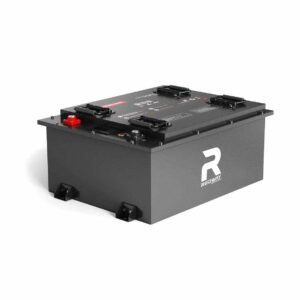What Makes a 36V 100Ah Golf Cart Battery Essential for Performance
A 36V 100Ah golf cart battery provides the optimal balance of voltage and capacity for extended range and consistent power delivery. With a 36V system supporting moderate energy demands and a 100Ah capacity ensuring longer runtime, this configuration is ideal for golf carts, ensuring reliable performance across hilly terrains and extended rounds without frequent recharging.
Why Is Lithium-Ion Preferred Over Lead-Acid for 36V 100Ah Golf Cart Batteries?
Lithium-ion batteries offer 95% depth of discharge (DoD), 50% lighter weight, and 3-5x longer lifespan than lead-acid. They maintain stable voltage during discharge, preventing power drops on hills. Charging times are 2-4 hours vs. 8-12 hours for lead-acid, with no maintenance required—unlike lead-acid, which needs regular water refills and terminal cleaning.

Modern lithium iron phosphate (LiFePO4) batteries further enhance safety with thermal stability up to 518°F, reducing fire risks. Their energy density (150-200 Wh/kg) allows compact designs, freeing up 30% more space in battery compartments. Unlike lead-acid, lithium-ion doesn’t suffer from “memory effect,” enabling partial charging without capacity loss. Advanced battery management systems (BMS) in lithium packs monitor cell balance, temperature, and charge states in real time, automatically adjusting parameters to optimize performance. This technology also enables smartphone integration for remote diagnostics—a feature absent in traditional lead-acid systems.
| Feature | Lithium-Ion | Lead-Acid |
|---|---|---|
| Cycle Life | 2,000+ | 500-800 |
| Weight (lbs) | 55-65 | 120-140 |
| Energy Efficiency | 98% | 70-85% |
How Does Temperature Affect a 36V 100Ah Golf Cart Battery?
Extreme cold reduces lithium-ion efficiency by 15-20%, while heat above 113°F degrades cells. Lead-acid loses 30-50% capacity in freezing temps. Lithium-ion operates optimally at 32°F–113°F. Use thermal management systems in lithium packs. In winter, store batteries indoors and pre-charge before use to mitigate voltage drops.
Battery heaters integrated into premium lithium models maintain optimal operating temperatures down to -4°F, using less than 5% of stored energy. In hot climates, aluminum heat sinks and active cooling fans prevent thermal throttling. Temperature impacts charging efficiency significantly—lead-acid requires voltage compensation (0.03V/°C) in cold weather, whereas lithium-ion chargers automatically adjust current flow. Prolonged exposure to high temperatures accelerates sulfation in lead-acid batteries 3x faster than normal conditions. For both types, every 15°F above 77°F cuts battery life expectancy by half, making shaded storage crucial in summer months.
| Temperature | Lithium Capacity | Lead-Acid Capacity |
|---|---|---|
| 32°F | 85% | 50% |
| 77°F | 100% | 100% |
| 104°F | 92% | 75% |
Modern 36V 100Ah lithium batteries revolutionize golf cart efficiency. At Redway, we’ve seen runtime increase by 40% compared to lead-acid, with a 70% reduction in weight. Integrating smart BMS technology not only enhances safety but also allows users to monitor battery health via Bluetooth, ensuring proactive maintenance.” — Redway Power Solutions Engineer
FAQs
- How long does a 36V 100Ah golf cart battery last?
- Lithium-ion: 8-10 years (2,000+ cycles). Lead-acid: 3-5 years (500-800 cycles).
- Can I upgrade my 36V lead-acid system to lithium-ion?
- Yes, but ensure the charger is compatible and check motor controller voltage limits.
- What’s the average cost of a 36V 100Ah lithium golf cart battery?
- $1,200-$2,500, depending on BMS features and brand. Lead-acid costs $400-$800.
- How do I dispose of a 36V 100Ah battery safely?
- Recycle via certified centers. Lithium-ion requires specialized handling to prevent fire risks.
A 36V 100Ah golf cart battery combines voltage stability and high capacity for uninterrupted performance. Lithium-ion variants dominate due to longevity, lightweight design, and minimal maintenance. Adhering to charging best practices and understanding environmental impacts ensures peak efficiency, making this battery type a versatile choice for both recreational and utilitarian applications.
